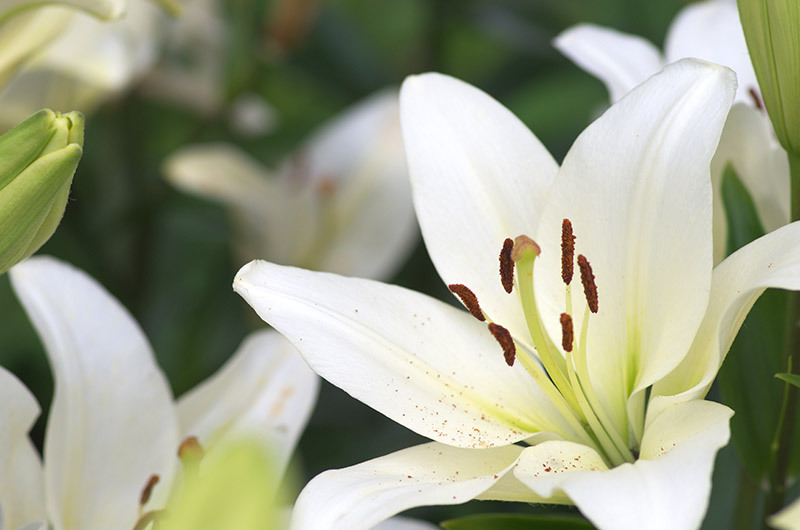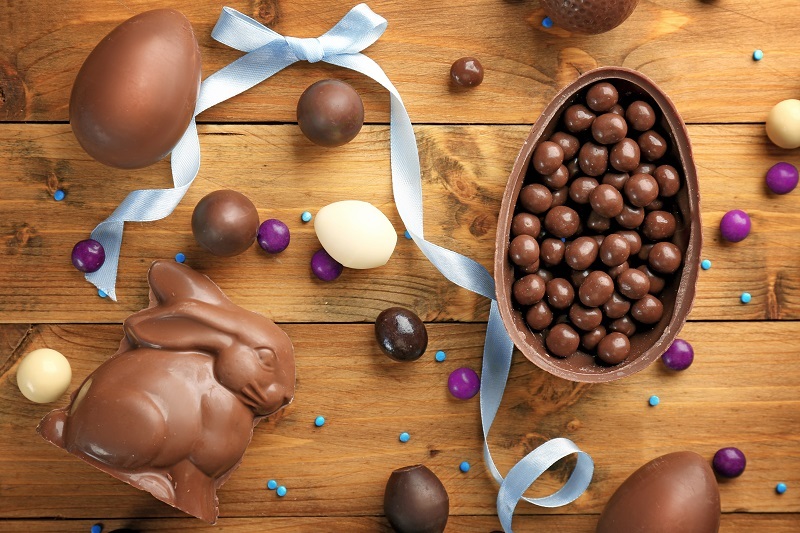Extend the Life of Your Holiday Poinsettias
Posted on 18/08/2025
Extend the Life of Your Holiday Poinsettias: The Complete Guide
The vibrant blooms of poinsettias are a classic holiday decoration, their cheerful reds and lush greens evoking the very spirit of the season. But all too often, as January rolls around, these beautiful plants wilt, their leaves fall off, and they're sadly thrown away. Do you want to extend the life of your holiday poinsettias and keep them thriving and colorful well beyond the festive season? Here's your comprehensive, *expert-approved* guide to prolonging the beauty of your poinsettia plant--from December through next winter and beyond!

Understanding Your Holiday Poinsettia: A Quick Overview
Poinsettias (Euphorbia pulcherrima) originate from Mexico and Central America, where they grow as perennials. They're known for their colorful bracts (the "flowers" are actually modified leaves), available in stunning shades of red, white, pink, and even marbled varieties. Given the right conditions, poinsettias can live for years, and even rebloom for many more holiday seasons!
- Scientific Name: Euphorbia pulcherrima
- Family: Euphorbiaceae
- Native Range: Mexico and Central America
- Life Cycle: Perennial (when cared for properly)
Why Do Poinsettias Die So Quickly After the Holidays?
If you've ever experienced droopy, lifeless poinsettias a few weeks after bringing them home, you're not alone. Several factors can contribute to shortened poinsettia plant lifespan:
- Improper watering (too much or too little)
- Exposure to drafts or sudden temperature changes
- Insufficient light in your home
- Lack of humidity, especially indoors in winter
- Root rot from sitting water
Luckily, by adjusting your care routine, you can easily extend the life of your poinsettia and keep it looking fabulous well into spring--and even get it to rebloom next year!
Essential Steps to Extend the Life of Your Holiday Poinsettias
1. Choose a Healthy Poinsettia from the Start
A healthy plant is key to longevity. When selecting a poinsettia, look for:
- Vigorous, deep green leaves with no wilting, yellowing, or brown spots
- Bright, evenly colored bracts (the "petals")
- Undamaged stems and no signs of pests
- Full, compact shape
- Little, yellow buds (true flowers) that are tight and not yet open--these last longer!
2. Create the Perfect Indoor Environment
Poinsettias prefer conditions similar to what they experience in their native habitat. Here's how to provide them:
- Light: Place your poinsettia near a bright window, but out of direct midday sun. Morning sunlight is best.
- Temperature: Ideal daytime temperatures are 65?F to 70?F (18-21?C). Keep away from *cold drafts* and sudden temperature swings; nighttime temperatures can drop as low as 60?F (15?C).
- Humidity: As winter indoor air dries out, use a humidifier or place a water tray nearby. *Grouping plants together* can also help keep humidity up.
- No drafts: Keep poinsettias away from radiators, fireplaces, and frequently opened doors.
3. Master the Art of Watering
Overwatering is the number one killer of poinsettias after the holidays! Here's the right way to water:
- Check the soil: Stick your finger an inch into the soil; only water if it feels dry.
- Drainage is critical: Most poinsettias come wrapped in decorative foil. Always punch holes in the bottom or remove the plant from the foil before watering, so excess water can drain away.
- Water evenly: Water generously, letting excess run out, then let the plant drain thoroughly before returning it to a saucer or decorative pot.
- Never let the plant sit in water: This will cause *root rot* and will kill the plant quickly.
4. Feed Your Poinsettia
During the holiday season, your poinsettia doesn't need extra fertilizer, but to support strong growth after the holidays:
- Start fertilizing in late winter or early spring when new growth appears
- Use a balanced, all-purpose houseplant fertilizer diluted to half strength
- Feed every 3-4 weeks through spring and summer
5. Pruning and Maintenance
Pruning is necessary to maintain a bushy, healthy shape and encourage reblooming:
- In early spring (March or April), cut stems back to 4-6 inches tall
- New growth will sprout from the leaf nodes
- Pinch off growing tips in mid-summer to encourage branching and fullness
- Remove any faded leaves or bracts promptly to reduce disease risk
Detailed Care Calendar to Prolong Poinsettia Life
Winter (December to February): Holiday Care
- Display your poinsettia in a *bright spot* away from drafts
- Water only when soil feels dry to the touch
- Enjoy its colorful bracts throughout the holiday season!
Spring (March to May): Transition & Pruning
- When colored bracts fade, cut back the plant to 4-6 inches
- Resume modest watering; don't let the soil become soggy
- Fertilize with half-strength fertilizer about once a month
Summer (June to August): Growth & Outdoor Time
- Repot your poinsettia if roots are crowded
- When danger of frost is past, move it outdoors to a slightly shaded spot (avoid harsh direct sun) for a summer vacation
- Water and feed regularly each month; pinch back stems in mid-July for bushiness
Fall (September to November): Prepping for Rebloom
- Bring the plant indoors before nights drop below 55?F (12?C)
- Continue to water and feed, but reduce fertilizer as the weather cools
- To trigger colorful bracts, place your poinsettia in complete darkness for 14 hours every night, starting early October; a large cardboard box or unused closet works great
- After the dark period, return it to normal light during the day
- Repeat this routine until vibrant color returns--usually 8-10 weeks
Pro Tips: How to Make Your Poinsettias Last Longer
- Avoid buying poinsettias displayed near store entrances, automatic doors, or cold windows: sudden temperature changes stress the plant and can cause bract drop
- Keep the foil wrapping open or remove it entirely for best drainage
- Use room-temperature water instead of cold tap water to avoid chilling the roots
- Monitor for pests: Whiteflies and spider mites are occasional threats indoors; treat with insecticidal soap if needed
- Don't expose poinsettias to fruit bowls: ripening fruit releases ethylene gas, which causes bracts to drop prematurely
- Consider a light misting to boost humidity, but avoid leaf wetting if your home is particularly dry
- Rotate the plant periodically so all sides receive even light and grow symmetrically
Myths and Facts About Poinsettia Care
- Myth: Poinsettias are poisonous to humans and pets.
Fact: While not designed to be eaten and may cause mild stomach upset if ingested, poinsettias are not highly toxic to humans or pets. - Myth: Poinsettias only last for a few weeks.
Fact: With proper care, they can live for many years and rebloom every holiday! - Myth: All poinsettias must be discarded after they lose their color.
Fact: The plant can be pruned, rested, and returned to bloom again next season with just a little extra care!

Frequently Asked Questions: Keeping Your Holiday Poinsettias Alive
How do I keep my poinsettia from dropping its leaves?
Leaf drop is often caused by:
- Overwatering or letting the plant sit in water
- Sudden temperature changes or drafts
- Insufficient light
Can I plant my poinsettia outdoors after the holidays?
If you live in USDA zones 9-11, you can transplant your poinsettia outdoors after frost danger passes. In cold climates, they'll need to remain as valued houseplants.
When should I prune my holiday poinsettia?
Prune in early spring after the bracts have faded, cutting back stems to encourage full, bushy regrowth.
How do I get my poinsettia to rebloom?
About 8-10 weeks before the next holiday season (usually October), place your plant in darkness for 14 hours each night. This encourages the colorful bracts to develop.
Summary: Enjoy Your Poinsettia Much Longer!
With these expert-backed tips and a bit of planning, you can keep your poinsettias alive and flourishing for months or even years. Their joyful, vibrant bracts don't have to fade with the calendar--your plant can be a centerpiece of festive color year-round.
In summary, to extend the life of your holiday poinsettias:
- Select healthy plants
- Give them bright, indirect light and steady temperatures
- Water only when the soil is dry, always ensuring proper drainage
- Feed and prune as recommended
- Consider the full annual care calendar for long-term beauty
Whether you're hoping to keep your holiday centerpiece thriving through spring, grow an impressive year-round houseplant, or see those gorgeous red bracts again next year, following these steps will help you enjoy your holiday poinsettia long after the season ends!
Start caring for your poinsettia today, and watch it brighten your home all year long.
Latest Posts
Essential Tips for Sending Sympathy Flowers in [POSTCODE/NEIGHBOURHOOD]
What to Expect When Ordering Wedding Flowers in [AREA]
Unveiling the mysteries: Surprising truths about tulips
Exploring the Rich Symbolism of Peony Flowers and Their Color Significance






